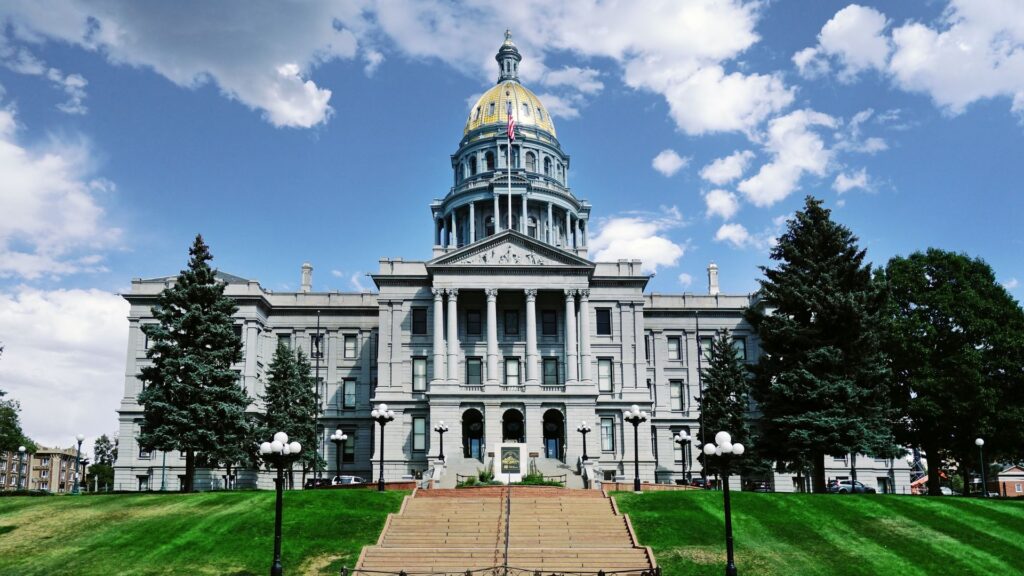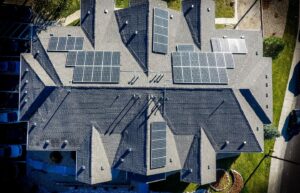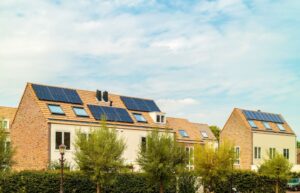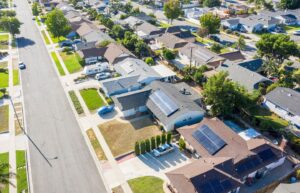The transformation of Denver, Colorado, from its humble beginnings to a significant urban development is a testament to the resilience and vision of its residents. They witnessed the city’s evolution, adapting to changes that spanned economic booms, technological advancements, and cultural shifts.
This historical development process was not merely about the construction of buildings and infrastructure but also the growth of a community that values progress and innovation. As Denver continues to expand, its history remains a foundation for future developments, reflecting a city that embraces change while honoring its past.
Key Takeaways
- Denver’s transformation into a significant urban center began with the Pike’s Peak Gold Rush, highlighting the critical role of natural resources in shaping cities. If you’re in Denver, consider visiting historical sites related to this era to understand its impact better.
- The formation of the Colorado Territory set the administrative and legal foundation for Denver’s development. For those interested in policy and governance, studying this period can provide insights into the complexities of territorial management and urban planning.
- Denver’s early settlements underscore the challenges and opportunities of frontier life. Modern Denverites can draw inspiration from this pioneering spirit, especially when facing contemporary urban challenges.
- The Progressive Era brought significant advancements to Denver, including infrastructural improvements and social reforms. This period serves as a reminder of the importance of civic engagement and the potential for collective action to enact positive change.
- Despite facing hardships during the Great Depression and World War II, Denver emerged resilient, adapting to economic and social shifts. This resilience is a key lesson for cities worldwide dealing with crises today.
- The suburban expansion and downtown boom, followed by 21st-century urban development, reflect Denver’s ongoing evolution. Understanding this history is crucial for urban planners, policymakers, and residents to make informed decisions about future growth and sustainability.
Pike’s Peak Gold Rush Beginnings
Gold Discovery
In 1858, the discovery of gold near the South Platte River marked a pivotal moment for Denver, Colorado. This significant find attracted thousands of prospectors eager to strike it rich. They journeyed across treacherous terrains, driven by the promise of wealth.
The influx of these fortune-seekers rapidly transformed the area. What was once a quiet expanse became bustling with activity. Denver’s population soared, as did its cultural and economic landscape.
Mining Camps
With the population boom came the establishment of mining camps. These makeshift settlements provided a base for operations and a semblance of community in the wild frontier. Residents faced harsh conditions but were united by a common goal: to unearth the precious metal that promised prosperity.
The camps evolved into more permanent structures over time. They laid down the foundations for what would become one of America’s most vibrant cities.
Economic Foundation
The gold rush didn’t just change Denver’s demographics; it revolutionized its economy. The city emerged as a key trading post for miners and merchants alike. This economic surge laid the groundwork for Denver’s future development, transitioning from a gold rush town to a thriving urban center.
Formation of Colorado Territory
Territory Creation
In 1861, the U.S. Congress established the Colorado Territory. This pivotal moment marked a new chapter for Denver. The gold rush had already brought thousands to the area. Now, territorial status promised more.
Residents saw immediate effects. The designation attracted investors. They were drawn by the potential for wealth and growth. Infrastructure projects began, changing Denver’s landscape.
Investment Surge
The arrival of territorial status spurred investment in Denver. Railroads expanded towards it, connecting Denver to major cities. This made trade easier and faster.
Businesses flourished with this new connectivity. Banks, shops, and hotels opened, catering to miners and newcomers alike. Denver’s economy diversified beyond mining, laying the groundwork for a thriving urban center.
Governmental Institutions
With its new status, Denver needed official institutions. They built a capitol building and other government offices. These structures symbolized Denver’s importance in the region.
They also established law enforcement agencies to maintain order amidst rapid growth. Schools followed, ensuring education for children in this burgeoning city.
Denver’s Early Settlements
Street Layout
Denver’s initial street layout was a grid pattern. This design made navigation simple for residents and facilitated trade. Main streets were wide, allowing room for horse-drawn carriages and, later, automobiles. Infrastructure development began rapidly to support the growing population.
The city planners focused on creating a functional yet appealing urban space. Parks and public squares were integral from the start, providing green spaces in the urban sprawl.
Cultural Diversity
The early settlers in Denver came from various backgrounds, contributing to the city’s rich cultural tapestry. There were miners in search of fortune, farmers looking to cultivate the land, and entrepreneurs ready to capitalize on the burgeoning economy.
This diversity led to a melting pot of traditions and cuisines that shaped Denver’s unique cultural identity. Festivals, markets, and religious institutions reflected this multicultural heritage, fostering a community spirit that persists today.
Native Conflicts
They faced significant challenges, including conflicts with Native American tribes. These confrontations often arose from disputes over land use and resources. The settlers’ expansion into territories traditionally used by Native Americans sparked tensions that sometimes led to violence.
Efforts were made to negotiate peace through treaties, but misunderstandings and broken promises exacerbated the situation. Despite these challenges, some managed to establish respectful relationships with local tribes, sharing knowledge and resources.
Progressive Era Advancements
Electric Innovations
Residents witnessed a significant leap in urban living with the introduction of electric streetlights. By the late 19th century, these innovations began illuminating Denver’s streets, enhancing safety and extending activities into the evening hours. Soon after, electric trams replaced horse-drawn carriages, revolutionizing public transportation. They made commuting faster and more reliable for everyone.
This shift not only improved daily life but also marked Denver’s entry into modern urbanism. The city’s landscape transformed rapidly, accommodating growing demands for efficiency and convenience.
City Beautiful Movement
The City Beautiful movement had a profound impact on Denver, particularly in the development of parks and public spaces. Inspired by this movement in the early 20th century, city planners embarked on creating lush green areas that offered residents places to relax and socialize. These efforts led to the establishment of iconic parks and boulevards that enhanced the city’s aesthetic appeal.
They prioritized beauty and functionality, believing that well-designed public spaces could foster community pride and social harmony. This vision materialized through extensive landscaping, adding a touch of elegance to Denver’s urban fabric.
Civic Institutions
During this era, Denver saw the establishment of key civic institutions like libraries and museums. These institutions served as cultural beacons, promoting education and enlightenment among residents. They were instrumental in fostering a sense of community and identity among Denverites.
Libraries became hubs for learning and discovery, while museums preserved the city’s heritage and inspired curiosity about the world. Together, they played a crucial role in elevating Denver’s cultural landscape.
Challenges of the Great Depression
Economic Struggles
Denver faced severe economic hardships in the 1930s. Unemployment rates skyrocketed as businesses closed their doors, unable to withstand the financial turmoil. Residents struggled to find work and those who had jobs often faced pay cuts or reduced hours. The city’s economy, once buoyant from mining and agriculture, was on its knees.
They saw their savings evaporate as banks failed, further tightening the grip of poverty across communities. Food lines became a common sight, symbolizing the depth of despair that had befallen Denver during these dark times.
New Deal Recovery
The New Deal programs were a beacon of hope for Denver’s battered economy. Infrastructure projects funded by these initiatives brought much-needed jobs to the city. Roads, bridges, and public buildings were constructed or improved, laying the groundwork for future growth.
These projects not only provided employment but also modernized the city’s infrastructure, making it more resilient to economic fluctuations. The residents witnessed a gradual improvement in their living conditions as the New Deal breathed new life into Denver’s economy.
Social Impact
The depression altered Denver’s social landscape significantly. Migration patterns shifted as people moved in search of better opportunities or relief from economic hardship. This movement brought about demographic changes that would shape Denver’s cultural and social identity for years to come.
Communities bonded over shared struggles, fostering a sense of unity and resilience among residents. They learned to support each other in times of need, creating networks of mutual aid that helped many survive the toughest days of the depression.
World War II and Its Effects
Manufacturing Hub
During World War II, Denver emerged as a critical manufacturing and supply center. The city’s strategic location, away from coastal threats, made it ideal for military logistics. Factories sprang up rapidly, producing essential goods ranging from textiles to machinery. This shift significantly bolstered the local economy, drawing workers from across the nation.
Residents saw their city transform almost overnight. The influx of jobs brought prosperity previously unseen during the Great Depression. They adapted quickly, filling positions that supported the war effort. Denver’s role in this period was pivotal, marking its first major step towards becoming a significant urban hub.
Population Boom
The end of the war ushered in a population explosion in Denver. Returning soldiers and families seeking opportunities contributed to this surge. Housing became scarce, leading to widespread development on the city’s outskirts. This expansion laid the groundwork for modern suburban living.
They witnessed neighborhoods springing up where none existed before. The demand for housing drove rapid construction, changing Denver’s landscape forever. It was a time of optimism and growth, setting the stage for future urban sprawl.
Military Presence
Post-war years also saw the establishment of several military bases and defense industries around Denver. Facilities like Buckley Air Force Base became key parts of the community. These installations provided steady employment and economic stability.
The presence of these bases solidified Denver’s role in national defense beyond World War II. Residents benefitted from the jobs and infrastructure these military sites brought with them. Their establishment helped transition Denver from a wartime production site to a peacetime pillar of industry and innovation.
Suburban Expansion and Downtown Boom
Post-War Growth
After World War II, Denver witnessed a significant suburban expansion. Families sought more space and the American dream of homeownership. This led to rapid development beyond the city’s core. New housing developments sprang up, catering to returning veterans and their growing families.
The economy flourished, fueled by a booming job market and advancements in automobile technology. These factors made suburban living not only desirable but also feasible. Residents enjoyed larger homes and yards away from the hustle of downtown.
Downtown Decline
By the mid-20th century, downtown Denver faced neglect. As people moved to the suburbs, businesses followed suit, leaving the city center less vibrant. Buildings fell into disrepair, and crime rates rose. The area became less attractive to both residents and tourists.
Efforts to revitalize downtown began in earnest in the 1970s and 1980s. City leaders recognized the need to breathe new life into this historic area. They focused on improving safety, restoring historic buildings, and attracting new businesses.
Revitalization Efforts
One key development was the construction of the Denver Tech Center in the 1970s. It became a hub for technology companies, drawing professionals back into the area. This move signaled a shift towards modernizing Denver’s economy and infrastructure.
Improvements in transportation played a crucial role as well. The expansion of highways and introduction of light rail made it easier for people to commute between the suburbs and downtown. These changes helped make Denver a more connected and accessible city.
21st Century Urban Development
Mixed-use Spaces
Residents have witnessed a significant shift towards mixed-use developments in Denver. These spaces combine residential, commercial, and entertainment facilities in one location. They’ve become popular for their convenience and ability to foster community interactions.
One notable trend is the rise of loft living in downtown areas. These modern spaces attract residents with their unique blend of historical architecture and contemporary design. They offer a vibrant urban lifestyle, with easy access to shops, restaurants, and cultural attractions.
Tech Growth
Denver’s economic landscape has been transformed by the technology and innovation sectors. Companies in these fields have chosen Denver for its educated workforce and high quality of life. This influx has spurred job creation, attracting professionals from across the country.
The city’s commitment to fostering innovation has made it a hub for startups and established tech firms alike. This growth has contributed significantly to Denver’s economic resilience and diversity.
Challenges Ahead
Despite these positive developments, Denver faces several challenges. Sustainability is a major concern as the city continues to grow. Efforts are being made to reduce carbon emissions and promote green living among residents.
Housing affordability remains another pressing issue. The demand for housing has led to rising prices, making it difficult for many residents to find affordable options. The city is exploring solutions, including increasing the supply of affordable housing units.
Tracing Denver, Colorado’s Historical Development
Denver’s journey from a gold rush camp to a bustling urban center illustrates the city’s resilience and adaptability. Residents witnessed transformations through eras of prosperity and hardship, each phase contributing to its rich tapestry. The 21st century marks Denver’s emergence as a significant urban hub, reflecting decades of strategic development and community effort. This evolution underscores the importance of understanding historical contexts to appreciate the present and envision future possibilities.
The story of Denver encourages other cities to examine their paths, learning from challenges and successes alike. It invites readers to delve deeper into the factors driving urban development, fostering a greater appreciation for the intricate processes shaping cities worldwide. Engage with Denver’s history, explore its landmarks, and contribute to ongoing conversations about urban development.




